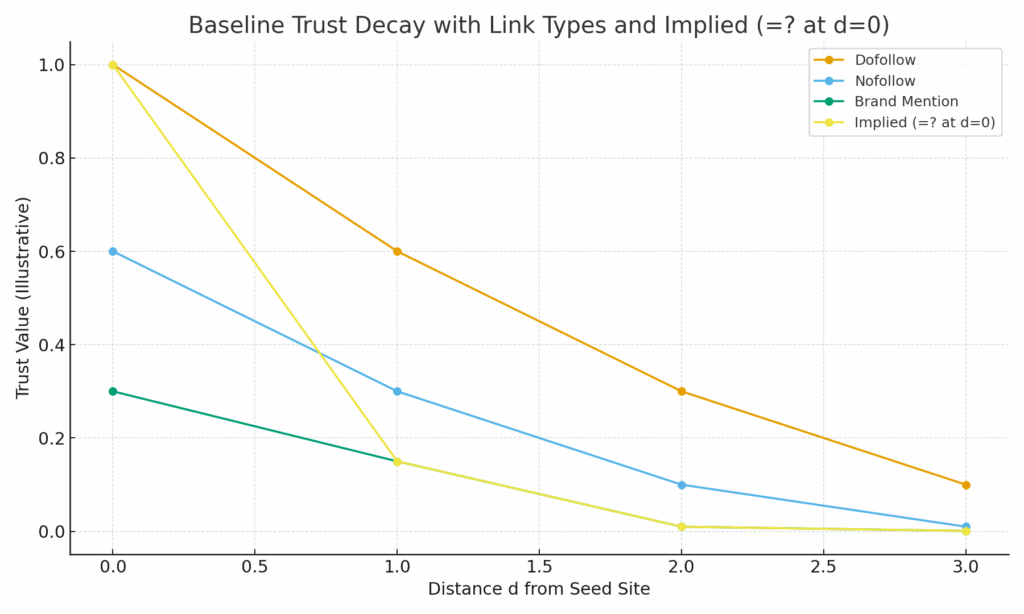For the full research paper: https://zenodo.org/records/17510854
Google’s ranking system is not only about what a page says, but who links to it. Some websites act as seed sites – trusted sources like Wikipedia, The New York Times, or national media such as DN or SVT. From these trusted hubs, link-based trust spreads across the web, losing strength with every hop — much like light fading over distance.
This research introduces a quantitative model describing how trust decays exponentially with distance from seed sites. It distinguishes between link types and demonstrates how each decays at different rates.
| Link Type | Example | Trust Effect |
| Dofollow | Editorial, standard links | Strongest effect |
| Nofollow | Comments, sponsored links | Partial effect |
| Brand mention | Text reference without hyperlink | Weak but measurable |
| Implied link | Brand mention close to a seed site | Uncertain, possibly strong |
Findings show that dofollow links carry strong trust for up to three hops, while nofollow and mentions decay faster. However, implied links near seed sites appear to gain additional strength through proximity to trusted domains.

Figure 1. Illustrative model showing how trust decays by distance and link type.
The values in the figure and table are illustrative. They may vary depending on the number of seed sites and how many outbound links those seed sites have. More seeds or more outbound links typically lead to faster decay of link value.
In Sweden, an estimated 200–3,000 seed sites exist among roughly 1.5 million websites. This mirrors Google’s original PageRank concept: the more nodes share link equity, the less each individual link is worth.
From an SEO perspective, the optimal strategy is to be among the few that earn links from seed sites while competitors do not, since relative trust remains higher when seed outflow is limited.
This study builds upon previous works: “Distance from Seed Sites and Indexing Latency” (Vesterlund, 2024, Zenodo: 10.5281/zenodo.17369057) and “Seed Sites vs. Crawl Budget” (Vesterlund, 2024, Zenodo: 10.5281/zenodo.17360293).

